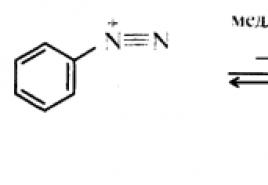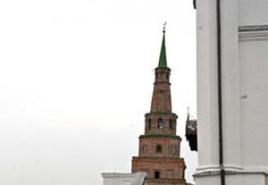A group who served in the GDR city of Wismar. City of Wismar (photo) - Denis Styazhkin - LiveJournal
Wismar is one of the most beautiful, exciting and atmospheric cities in modern Germany. Few travelers know that this territory previously belonged to the Swedish state, and was also part of the so-called “Hanseatic” League. That is why the architecture of the city has retained the features of several cultures united under a common principle. All this has been preserved in the Old Town, a special area that has been under UNESCO protection since 2002.
The city is distinguished by its extremely photogenic nature. Even if you do not have professional knowledge in photography, you will definitely bring back beautiful pictures from your trip. So how can lovers of such classics as Nosferatu from 1922 not visit the Old Harbour? After all, this very place was depicted in one of the most famous films about creatures of the night almost a hundred years ago. Have you not yet fully realized the magic that Wismar gives to every visitor? Then we will look in detail at what interesting places you can visit, what are the most interesting and healthy things to do, and even places where you can try local cuisine or just have a delicious lunch!
View of colorful Wismar, Germany (Photo above© pxhere.com / CC0 Public Domain License)
Old town and its surroundings. Let's start with those moments that you can watch on your own and for free. This list includes the Old Town, which is the heart of Wismar. Here, for example, is the largest square of the Middle Ages - Market Square. Perhaps the largest markets used to be located here, but now the main attractions are slightly different objects.
One of them is the Wasserkunst well, whose history dates back to 1602. It is decorated with mosaic patterns and people once used it as a source of drinking water. Nearby are the ancient buildings "Red Swede" (AlterSchwede) and the Town Hall. There you can also visit a special historical exhibition from 10 am and 6 pm, the cost of which is 2 euros per adult and 1 euro per child.
MuseumSchabbellhaus. Another museum of the history of the city, which is located in the Renaissance brewery building (Schabbellhaus), located near the Church of St. Nicholas.
Church of St. Nicholas. A unique architectural monument that survived the Second World War awaits all visitors for a fee of 2 euros. Opening hours vary slightly depending on the month: from 8am to 8pm from May to September, from 10am to 6pm in October and April. During the remaining hours, the museum is open from 11 a.m. to 4 p.m.
St. Mary's Church spire. The spire is all that remains of the once beautiful and majestic building. On the lower floor there is a museum that tells about the construction technologies of ancient churches. You can visit the exhibition from 10 am and 6 pm from April to October. In other months from 11 a.m. to 4 p.m.
St. George's Church. There are truly many churches in the city, and they are all unique, with stunning architecture. This building is undergoing a long post-war reconstruction and will soon become a monument of cultural and historical heritage.
Top 5 things to do while in Wismar

Places to eat
All active vacationers need to refresh themselves sometimes in order to move forward with renewed vigor.
- T’onZägenkrog is a restaurant for those who love fish. It is cooked superbly here. There are other seafood on the menu, and the view from the restaurant is truly inspiring - overlooking the harbor. The approximate cost of lunch is 25 euros.
- AlterSchwede – in this restaurant you can order a traditional dish – Baltic eel. There are also many other seafood dishes with a wide variety of side dishes. Lunch will cost you an average of 25 euros.
(Photo above© Okieh / commons.wikimedia.org / Licensed under CC BY 2.0)
How do we save up to 25% on hotels?
Everything is very simple - we use a special search engine RoomGuru for 70 hotel and apartment booking services with the best price.Bonus for renting apartments 2100 rubles
Instead of hotels, you can book an apartment (on average 1.5-2 times cheaper) on AirBnB.com, a very convenient worldwide and well-known apartment rental service with a bonus of 2100 rubles upon registrationThere wasn't much to do (the original plan was to spend the whole day there), I looked at the map and saw the fairly large city of Wismar nearby.
“Some very familiar name,” I thought. Photographs, UNESCO World Heritage Lists, the history of the Hanseatic League and other nonsense began to pop up in my head, which was firmly stuck in my memory. So that’s where the path must lie!
As it turned out later, I was right at all: Wismar is one of the most beautiful cities in northern Germany, which for some surprising reasons is almost unknown to a wide range of travelers. Everyone considers it their duty to visit Lubeck, Hamburg or the same Rostock, although they cannot even come close to competing with Wismar in terms of the beauty of the old city, its size and the general pervasive atmosphere of one of the medieval centers of the powerful Hanseatic League!
Wismar, like many cities in this region, was founded by West Slavic tribes, which were conquered by more developed and organized Germanic peoples in the 12th and 13th centuries. Already in the first half, the city passed into the possession of the ancestors of modern Germans, and several decades later it entered into an alliance with nearby Lübeck and Rostock, providing for joint protection from sea robbers. It was from this union that the Hansa grew.
After the Hanseatic League lost its influence, Wismar was alternately ruled by the Swedes, the Danes, and again the Swedes. It was these northern people (the Swedes) who in the 16th century surrounded Wismar with the most powerful defensive fortifications in all of Europe: the city was defended by about 700 cannons mounted on numerous bastions.
There is one point connected with Wismar, which, no doubt, will be of interest to residents of Germany and its frequent guests. I’m sure you all know the Karstadt shopping center chain: it is one of the largest and oldest retail chains in Germany, with stores in, perhaps, any more or less large city in the country. But it was in Wismar in 1881 that 25-year-old Rudolf Karstadt began his successful business by opening his first store here.
The old town and medieval buildings begin literally a few hundred meters from the train station. As soon as you have time to take out your camera, wonderful half-timbered buildings appear before your eyes. 
There is also the Church of St. Nicholas, built in the 14th century. Its central nave rises 37 meters above the ground, making this temple one of the largest in Germany. Experienced travelers claim that the interior of the Church of St. Nicholas is particularly beautiful and has unusual opportunities for visitors (you are invited to go up to the attic and look down at the tiny silhouettes of people), but, unfortunately, I did not have time to arrive before it closed. But we managed to look at it in the night illumination. 
The center of Wismar is pierced by the tiny Mühlenbach river, the embankments of which look exactly like from pictures about the life of provincial European cities. 
One of the bridges over Mühlenbach is decorated with extremely cute piglets. I just want to drag one of them with me. 
The heart of the old city is the Market Square (you can see it in the title photo of this post). This is simply a pearl of medieval architecture and a paradise for lovers of such sights! Largely thanks to the architectural ensemble of the Market Square, Wismar was included in the UNESCO cultural heritage list. 
The most famous building of the Market Square and all of Wismar is the “Old Swede”. The red brick building, built in 1380, acquired its current name only at the end of the 19th century, when a hotel of the same name opened in it.
To the left of the “Old Swede” there is an equally interesting building, but without such a memorable name. 

Another symbol of the city is the water pavilion. Built at the end of the 16th century, it already at that time supplied water to 220 nearby houses and a dozen public pumps. Residents of other cities envied the Wismarians for a long time and silently drew water from the wells. 

An almost exhaustive panorama of the city. 
The streets of old Wismar are wonderful. There is a great relaxing atmosphere here, there are no crowds of tourists, and you want to move around the city only slowly. So as not to miss the opportunity to look at every little thing, every detail. After all, every brick in the wall of a rickety house, every cobblestone of a wide pavement - everything is literally saturated with the glorious centuries-old history of these places. And you feel it. And it seems as if, along with the ringing of church bells, a rich merchant or a stern sailor will come out from around the corner; looking into the yard you will see children in linen pants chasing chickens and then running away from their noisy mother. In Wismar, you understand that in order to travel into the past, scientists do not need to invent a time machine - you just need to take care of the cultural wealth that your people have, in your city or country. And then your children and grandchildren will be able to visit your time decades later, and future generations, passing centuries, will have the opportunity to see the world the way you saw it. 





Unfortunately, people do not always value what is at their disposal. The clearest example of this is the Wismar Church of the Virgin Mary. For centuries, it was the largest temple in the entire Baltic region and one of the most striking examples of North German brick Gothic. During its existence, it became a full-fledged symbol of Wismar and a landmark for sailors, as it towered over the entire city.
During World War II, several bombs hit the church building. The destruction was not too serious, so after the end of the war, none of the townspeople doubted that the Church of the Virgin Mary would soon be restored.
Years passed, but the temple remained in ruins - neither the city nor government authorities undertook its restoration. And so, in 1960, an order came from Berlin from the leadership of the Socialist Party: to blow up the church, preserving only the bell tower. The official justification for these monstrous actions was absolutely ridiculous: the partially destroyed walls of the temple could damage neighboring houses and harm children playing nearby. By the way, according to the calculations of the builders, the costs of complete restoration were simply ridiculous, and this process would have taken only 3 years, provided that only 20 people worked there!
On the morning of August 6, 1960, the area around the Church of the Virgin Mary was cordoned off, and preparations were underway for demolition work. The temple had to be blown up in several stages: the “dangerous” walls turned out to be so strong.
After the work was completed, the ruins of the church were removed, and the bricks were sent for processing - after some time they were used in the production of slabs for panel high-rise buildings. 
After the unification of Germany, a foundation was built here that completely replicates the shape of the once beautiful temple. In the GDR, this place was... a parking lot. This looks especially blasphemous when you consider that the most prominent residents of the city were buried within the walls of the Church of the Virgin Mary at different times - those who gave Wismar very, very much during their lives. 
A few city details. 

Near some houses there are still scrapers that help remove dirt from shoes before entering living quarters. 
Soon I will have a whole collection of highly artistic manhole covers and will have to devote a separate post to them. 
I noticed an old advertising sign on one of the houses. Of particular interest is the way work hours are written: from half past five to half past six. 
No matter how beautiful Wismar is, there is a lingering feeling that the eastern part of Germany is poorer than its western brother. This can also be seen in the historical center: some of the buildings are in deplorable condition. 


However, all the shortcomings of Wismar can be forgiven - it is truly one of the coolest cities in northern Germany! 




True, there is one more nuance that I remember quite strongly: the house of sorrow. I don’t know whether I was so “lucky” or whether all the patients were returning to the clinic at that time, but during my walk I constantly came across people with various mental disorders. And considering that there were very few random passers-by in the city, this situation was a little stressful. However, towards evening they disappeared somewhere. 
Finally, one instructive story.
As I already said, I went to Wismar absolutely spontaneously, and during all this commotion I completely forgot to look at the return schedule. However, I arrived at the station not so late - it was only half past six. It is impossible to convey here the whole cascade of emotions that I experienced when I found out that I could only arrive in Hamburg at more than two in the morning! And this despite the fact that the journey usually takes less than 2 hours. The most annoying thing was that I was literally a couple of minutes late for transferring to another train, which raised the prospect of waiting for many hours in some railway village.
What to do? I put myself in the hands of fate and went to this village. And then a miracle happened! For the first time in my life, I was grateful that public transport tends to be late. My train to Hamburg was delayed by 7 minutes, which gave me the opportunity to catch it and not meet midnight somewhere in the middle of fields and railways. 
To sum it up: I definitely recommend Wismar to all travelers. It gives the most complete picture of what medieval cities around the Baltic Sea looked like, and the sights of the historical center are more than enough for a whole day of wandering through the narrow streets.
How to get there:
The largest cities with direct train connections are Rostock and Schwerin. From Hamburg you will have to get there with one change in Schwerin or that same village called Bad Kleinen.
Today's story is for those who served in Wismar.
We have lived in Wismar since 1998 and have observed how the territory of the former military unit has changed. But the checkpoint has not changed at all during this time, except that the gates blocking the passage into the former military unit have disappeared.
The fence along the road leading deeper into the territory has also been preserved.
To the right of the road is a building with columns. Externally, it has changed little, but inside renovations are in full swing - the Technical Museum will open here in the fall.
View of the same building from the back side. You may notice that renovations are only taking place in the central building and one wing. The other wing is not yet in order
We're on it discovered a bas-relief preserved from earlier times
From here you can see the blue building of the Wismar shipyard
Next to the future Technical Museum is a former barracks building. A couple of years ago it was renovated, balconies were added and now This is a nursing home.
This panoramic photograph of this house was published in the local newspaper Wismar-Zeitung

The field next to the former barracks was built up with small houses
Now this area is calledKasernenhof.And the residents still call itRussenberg
For further inspection of the area, we will return to the road leading from the checkpoint. We passed the barracks, turned left and saw a long building. As far as we understand, these are former garages or warehouses
Behind them is a brick house. It now houses a kindergarten.
To the right of it is the road to the Zoo (Tierpark)
And to the left there is a view of the shipyard. As far as we understand, this path used to lead to the glass store. When we arrived in Wismar, the glass was still standing. It was demolished a few years ago
You and I don’t turn off to the Zoo, but go straight (the kindergarten is behind us). We are heading to the former landfill. We pass a large building (it looks like a large barn). Now it hosts all sorts of events like concerts of rock bands, festivals, etc.
There is a new building next to it. It refers to a park that was built in 2002 on the site of a former landfill.
There is a parking lot opposite this building. A former barracks can be seen in the distance
And this is the park itself
It's called Burgerpark. On one side it borders on the zoo (there is now an entrance to the zoo from here too). A small part of the new park is also occupied by animals.
A few more photos to complement the story. We made them in October 2014.
The Technical Museum opened a long time ago and is operating successfully. This year there was an exhibition “The Legacy of the Soviet Army in Germany”. The exhibition did not seem very interesting to us... They demolished the wing of the building on which we photographed the bas-relief (a tank against the background of a star). But it seems that the bas-relief itself was preserved. The development of the territory continues. The checkpoint until recently had a completely abandoned appearance, but now it has become prettier. New windows and doors were installed and the gates were repaired.
The yard is now being tidied up
We were asked whether the commandant's office building had survived. Since we don't know where exactly she was, we'll show all the buildings that are currently nearby.
This building is located directly opposite the checkpoint, but it is definitely a new building
Photo 1
We climb up Lubsche Strasse. Here are all the buildings that stand opposite the former military unit.
Photo 2
Photo 3 Photo 4
A red brick house and several other small residential houses complete the row. Next is an intersection, near which there is a recently built supermarket.
Photo 5
Now let's return to the checkpoint and move down the street.
The place where the glass shop was located now looks like this
Photo 6
There are two houses directly opposite
Here they are closer
Photo 8
Photo 9
There are other houses like this nearby
Photo 10 Photo 11
Then there are a couple more residential buildings and a large OBI building materials store, and beyond that there is an intersection
Now a couple of photos that were asked to be shown in the comments
One of the oldest hospital buildings. This is where the maternity hospital is now located (what was described in the comments as Kinderklinik)
Former officers' houses on Tschaikowskistraße (now ordinary residential buildings) oma). Only two houses are visible in the photo, but all three houses have been preserved.
The Garrison House of Officers, which was located nearby, no longer exists. This building was demolished about 18 years ago. A new one was built in its place - there are apartments for students and a hotel. This place is the corner of Tschaikowskistraße and Lübschestraße
And the entrance itself is number 46
If anyone has old photographs of the territory of a military unit or residential buildings, we are ready to post them here.
Here are a lot of photos from the beautiful German city of Wismar, where I constantly live; it is closest to my village.
Wismar is a state port city on the shores of the Baltic Sea in Germany (Mecklenburg-Vorpommern). As one of the first and most prosperous cities of the Hansa, it is proud of its historical center with mansions and temples in the brick Gothic style, which is under the protection of UNESCO.
2. The population here is 44,397 people, according to the 2010 census

3. Wismar arose as a settlement of the Polabian Slavs, probably with the name Wishemir. In the first half of the 13th century it received city rights. To protect against sea robbers, in 1259 an alliance was concluded with Rostock and Lubeck, from which the Hanse grew. In the Middle Ages, Wismar specialized in the trade of herring and beer; in addition, cloth was made here. Issues concerning the Hanseatic League were resolved at general meetings of residents.

4. Wismar still retains such relics of former free cities as the right to have its own flag. From 1257 to 1358 the city served as the residence of the princes of Mecklenburg. The Black Death of 1376 wiped out a significant part of its population. Like other cities of the Hanseatic League, Wismar began to lose its former importance after the discovery of America, when trade routes shifted to the Atlantic.

5. The economic decline was completed by the Thirty Years' War. According to the Peace of Westphalia in 1648, Wismar became part of Swedish Pomerania and became the largest Swedish fortress on the southern coast of the Baltic.

6. In 1803, Sweden mortgaged the city to the Dukes of Mecklenburg for 1,258,000 Reichsthaler, reserving the right to return it after 100 years. Although Wismar later became de facto part of the German Empire, the Swedish authorities did not recognize the loss of rights to it until 1903.

7. The city, which housed the Dornier aircraft company's factories, was heavily damaged by Allied bombing in World War II. During the GDR years, Wismar was considered the second most important (after Rostock) sea harbor of the state. In particular, potash fertilizers were transported through its port.

8. The historical centers of Wismar and neighboring Stralsund were placed under UNESCO protection as world cultural heritage in 2002.

9. In general, it’s very nice and cozy here

10. Before the war, the Wismar Church of the Virgin Mary was one of the largest North German churches in the brick Gothic style. Its architect, Johann Groth, took the three-nave basilica of Mary's Church in Lübeck as a model. In April 1945, during the bombing, the main building was heavily damaged. The ruins were finally blown up in 1960. All that remains of the church is a high tower (81 m), on which 9 bells of the 16th-17th centuries hang. Here, in 1647, a clock with a dial measuring 5x5 m was installed, which performs one of 20 chorales four times a day.



13. Wilhelm

14. In the temple

15. Seagull. The seagulls here are not scared at all, you can get close to them


17. The other day we went with our Russian-speaking colleagues to a fish diner to eat some fishbrotchen, we place an order, we talk among ourselves, and from behind the counter a woman of Caucasian appearance suddenly, in the purest Russian, answers us that she has the most delicious thing here, gives advice, that better to order. We met her, it turned out that she was from North Ossetia, in short, she was Russian. She prepares everything herself in her cafe, and her prices are the most reasonable. Now we will only eat there at our leisure.






|
Coat of arms of Wismar |
|
| A country | Germany |
| Earth | Mecklenburg-Vorpommern |
| Population | 45,182 people (2006) |
| Square | 41.36 km² |
| Postcode | 23952, 23966, 23968, 23970 |
| Vehicle code | HWI |
| Official site | http://www.wismar.de/ (German) |
| Official code | 13 0 06 000 |
| Coordinates | Coordinates: 53°53′33″ N. w. 11°27′54″ E. d. / 53.8925° n. w. 11.465° E. d. (G) (O) (I)53°53′33″ N. w. 11°27′54″ E. d. / 53.8925° n. w. 11.465° E. d. (G) (O) (I) |
| Burgomaster | Rosemarie Wilcken (SPD) |
| Center height | 15 m |
| Telephone code | +49 3841 |
| Timezone | UTC+1, in summer UTC+2 |
Wismar (German: Wismar) is a city in Germany, a city of state subordination, a Hanseatic city, located in the state of Mecklenburg-Vorpommern.
The population is 45,182 people (as of December 31, 2006). Covers an area of 41.36 km. The official code is 13 0 06 000.
Story
The exact date of the establishment of a settlement called Wismar and the roots of this name are unknown, although the sound of this word is consonant with Slavic languages. The Mecklenburg fortification near Wismar is often identified with Veligrad - the city of the Obodrites from medieval chronicles:
“And there was Prince Vandal, he ruled the Slavs, going everywhere to the north, east and west by sea and land, having conquered many lands on the sea coast and subjugating the peoples, he returned to the Great City (Veligrad) ...”
It was there in Veligrad, the city of the Bodrichi, that Rurik and his two brothers first appeared.
Archaeologists suggest that Veligrad was founded in the 7th century. According to the Joachim Chronicle, the “Great City” was located on the seashore.
It is known that in 1293 the city of Wismar, together with Lubeck and Rostock, organized the trading Hanseatic League. From 1257 to 1358 the city served as the residence of the princes of Mecklenburg. General meetings were held in the city 70 times, at which issues of the union were decided. However, after the discovery of America, trade routes shifted to the West, and the Hansa ceased to exist. Since that time, the city has lost its importance. The economic decline was completed by the Thirty Years' War. According to the Peace of Westphalia in 1648, Wismar came under Swedish rule, which regarded the city as its "largest fortress in Europe".
In 1803, Sweden founded the city and gave supreme power to Mecklenburg for 1,258,000 Reistalers, reserving the right to return the city after 100 years. Based on Swedish rights, the city of Wismar was not incorporated into Mecklenburg until 1897. In 1903, Sweden finally renounced its rights. Wismar still retains several of the old "city liberties" laws, including the right to have its own flag.
The city, which housed the Dornier aircraft company's factories, was heavily damaged by Allied bombing in World War II. Nevertheless, the city center was included in the UNESCO list as a world cultural heritage in 2002.
During the GDR years, the city was considered the second most important sea harbor of the state, specializing in the shipment of potash fertilizers.
Attractions
Market Square

Building "Old Swede"

The photo shows the brick “Old Swede”, built in 1380. The “Old Swede” received its name only in 1878, when a hotel was opened in it.
This is the largest market square in the world with a size of 100100 m. In 1602, according to the drawings of Philip Brandin, a 12-sided pavilion made in the style of the Dutch Renaissance was installed on it. The pavilion, called Wasserkunst, served as a distribution point until 1897, from which 220 residential and 16 public buildings were supplied with water. This pavilion, along with the Church of St. Mary, is considered one of the most important attractions of the city.

Before the war, it was one of the largest North German churches built in the brick Gothic style. Its architect, Johann Groth, took the three-nave basilica of Mary's Church in Lübeck as a model. In April 1945, during the bombing, the main building was heavily damaged. The ruins were finally blown up in 1960. All that remains of the church is a high tower (81 m), on which 9 bells of the 16th-17th centuries hang. Here, in 1647, a clock with a dial of 55 m was installed, which performs one of 20 chorales four times a day.







